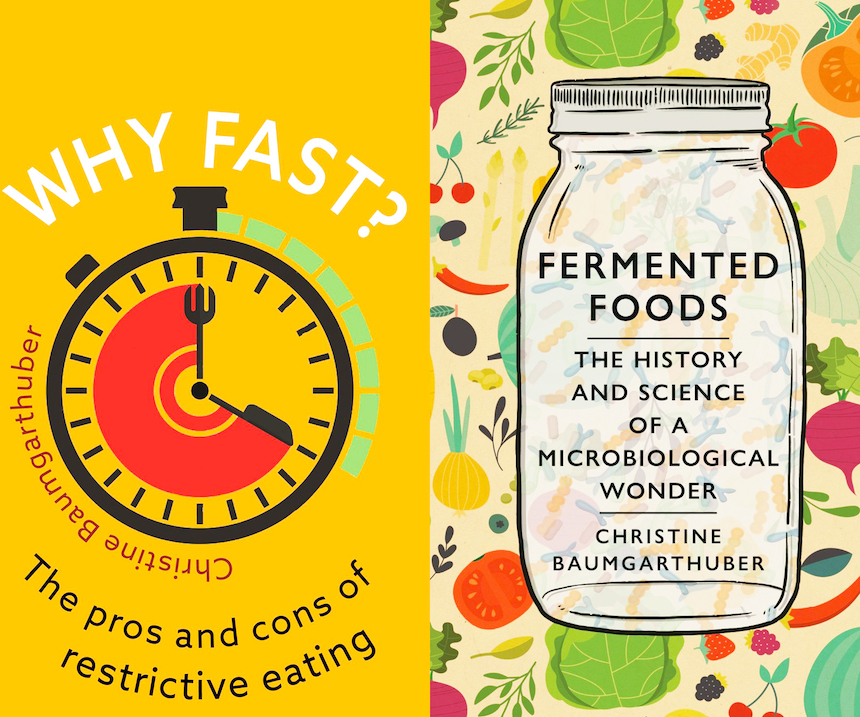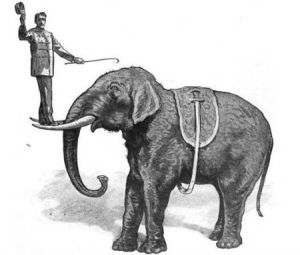
Ivan Aivazovsky, The Shipwreck (1884)
Obscurest night involv’d the sky,
Th’ Atlantic billows roar’d,
When such a destin’d wretch as I,
Wash’d headlong from on board,
Of friends, of hope, of all bereft,
His floating home for ever left.
–William Cowper, “The Castaway”
Of all the ways French physician Alain Bombard could’ve spent his 28th birthday, he chose to do so adrift some 1,500 miles at sea. In the wide blue immensity, the only thing between Bombard and Davy Jones’s locker was the deck of a dinghy he had christened, with cheek that belied the gravity of his situation, the Heretic.
From the Heretic’s bow ran a fishing line. The line absorbed all of Bombard’s attention; it had sprung up and drawn taut in a flash nearly as soon as he had cast it. Only at the line’s end, snagged by the baited hook, was no fish but a shearwater. The sea-going bird had swallowed the bait, hook and all, before Bombard could jerk it away. He made the best of the situation. After all, he had a bird in hand, that prize of the hoary old adage. And it happened that he was also gripped by a gnawing hunger. Rather than free the shearwater, then, he reeled it in. Its struggles and injury filled Bombard with fellow feeling for a suffering creature. With some remorse he dispatched the hapless bird by wringing its neck.
Bombard stripped the shearwater of its slate-gray feathers, taking care not to strip it of its skin, rich in fat, in the process. He cut the plucked carcass in two lengthwise. One half he ate raw. The other half he set out to dry in the sun. Bombard would later say of that birthday dinner for one: “The flesh was excellent, but it had an undeniable taste of fish.”
Unlike a great many other kinds of exotic flesh sampled by humans, raw breast of shearwater ended up not to taste like chicken — a revelation that likely disappointed Bombard. Fish had been the whole of his diet for two weeks previous. He ate their flesh and their innards to keep himself from death. Yet Bombard was no castaway; this joyless diet was one he chose. He was an experimentalist determined to prove a theory he had developed: that shipwrecked sailors could survive until rescue or landfall if they drank seawater in moderate amounts. It of course ran counter to prevailing wisdom that seawater would not only fail to preserve a castaway; it would hurry him to death all the faster. The same prevailing wisdom lay behind the famous saying: “Water, water everywhere — and not a drop to drink!”
Bombard’s heterodox theory, which may explain his christening his dinghy the Heretic, had its origin in a stint at a hospital in Boulogne years before. A trawler had hit the outer end of the Carnot breakwater near the Boulogne harbor, dumping the trawlermen into the sea where they died before anyone could save them. The trawlermen’s bodies were fished out and brought to the hospital, “piled one on top of the other, like dislocated puppets,” as Bombard wrote, “their feet bare and each still wearing a life jacket.”
The image of men drowned in their life jackets remained with Bombard, by turns haunting and bedeviling him. He became convinced that the trawlermen needn’t have died, and they wouldn’t have done so if only they’d known what action to take to save themselves. The problem was that no one of Bombard’s time knew what that action was. The state of ignorance told in the fatality figures: Ninety percent of shipwreck survivors survived shipwreck only to die within three days. Bombard himself estimated that 200 thousand souls died at sea each year. It seemed to him that being at sea was the decisive factor. Had those deceased castaways been marooned on land, they could’ve survived for weeks, even with no food or water.

Charles Napier Hemy, Boat Adrift (c. 1890)
Spurred by his conviction, Bombard studied reports of shipwreck survivors who managed to survive their time adrift. In their accounts, survivors mentioned that they subsisted on fish guts, and that they’d wash this gruesome meal down with seawater, which they took care to drink in moderate amounts.
From these reports of shipwreck survivors Bombard turned to the literature on Eskimos. These indigenous people of the extreme northern latitudes had something in common with the castaways: They also ate a limited austere diet, albeit to survive the long polar winters rather than long bouts at sea. Their meal was seal meat and fat rather than fish viscera. Yet these they likewise washed down with salt water gotten from melting sea ice. The six months or so that Eskimos endured this diet presented no “serious consequences to their digestion,” as Bombard would note.
His research left Bombard resolved to prove that what conduced to survival in the frozen wastes would do likewise in the watery wastes. On May 25, 1952 he pushed off from the shores of Monaco in the Heretic, in which he stowed only a few fishing lines, harpoons, and a plankton net. Bombard wasn’t a complete daredevil, however; he also stowed a small sealed box of rations. This he planned to open should sustenance from the sea be wanting.
From Monaco, Bombard steered his Heretic for the Canary Islands, and from there the open sea. All along the way he sipped sea water. For meals he had plankton he netted, which tasted to him like “lobster pureè,” and the occasional nosh from his rations. His passage past Minorca toward Tangier saw him well enough. Near the Canary Islands the tradewinds began to buffet his back, carrying him into the open sea. There the Heretic would see the occasional escort from pods of sportive dolphins. At other times, sharks would circle. These more foreboding latter companions left Bombard untroubled. He continued his regimen of seawater and whatever fruits the depths surrendered, giving no further thought to his rations.
About a month into Bombard’s open-sea vagabondage, crew from a passing ship spotted the Heretic. The ship pulled alongside it and invited its lone passenger aboard, where he was offered a hot shower and a hot meal (a fried egg, a bit of liver, some cabbage and fruit). The shower Bombard found reviving. The hot meal, however, he found not at all so. The fare upset his stomach, which had grown use to the sea’s spartan bounty. When he took leave of his hosts, Bombard felt worse than he did when he met them.

Knud-Andreassen Baade, The Wreck (c. 1835)
Bombard remained at sea until December 23, the two months adrift seeing him lashed by violent storms and menaced by swordfish — their characteristic feature, specifically — against which the Heretic, naught but rubber and air, could be no proof. He made landfall in Barbados, having traveled some 2,700 miles, all told. As for his rations, he had not touched them since he reached open waters. “My larder followed me wherever I went,” he later wrote, and he drank rainwater when he could. During periods of drought Bombard got by on the juices he wrung from various fish and seawater. He calculated that fish juice alone carried him through 43 days of his voyage; seawater alone, through fourteen.
Bombard had survived. But it could hardly be said that he’d thrived. He described his trip as a “starving, thirsty hell,” the ravages of which were patent. Diarrhea, internal hemorrhages, anemia, strange rashes, dimmed vision, loss of toenails and weight — such were the consequences of his castaway cuisine. In the main, however, he was nonetheless correct. By drinking seawater sparingly and early on could ship survivors prolong their lives.
For all of its grueling privation, Bombard’s experiment met with a disappointing response. Few got the point of it. Some contested it, maintaining that survival at sea requires the constant consumption of freshwater. Bombard himself met with a much happier reception. He became a hero in his home country of France. A line of lifeboats was named for him, and he served as its spokesman. Later, he went on to become France’s secretary of state for the environment. Despite the attention and acclaim, however, Bombard ended his life in relative poverty. His legacy endures undiminished, because he was one of those rare individuals who willingly leapt into danger so that the rest of humanity may benefit.
Should you like to honor Bombard’s legacy yourself (his birthday is this month) you could make this lobster dish from La Cuisine Française (1893). It may not be as novel a flavor as plankton plucked fresh from the sea, but it’s a fair approximation.
Homard Grille (Broiled Lobster)
Two, two-pound lobsters
4 tablespoons olive oil
Salt and pepper to tast
½ handful of parsley
Preparation: 1st. Cut the lobster in two endwise, place those halves on a dish, pour over some salt and pepper, and about 4 tablespoonful of olive oil. 2d. Let broil on a light fire, for about ½ hour, taking care to turn them from time to time. 3d. Serve on a dish with green parsley around the sauce. Serve with: Sauce Mayonnaise, Sauce Tartare, Sauce Remoulade.

Would you rather receive The Austerity Kitchen by email? Then sign up for my Substack.
And, if you’d like to help the Kitchen keep cookin’, please consider picking up copies of my books, Why Fast? and Fermented Foods.

One thought on “Alain Bombard’s Castaway Cuisine”